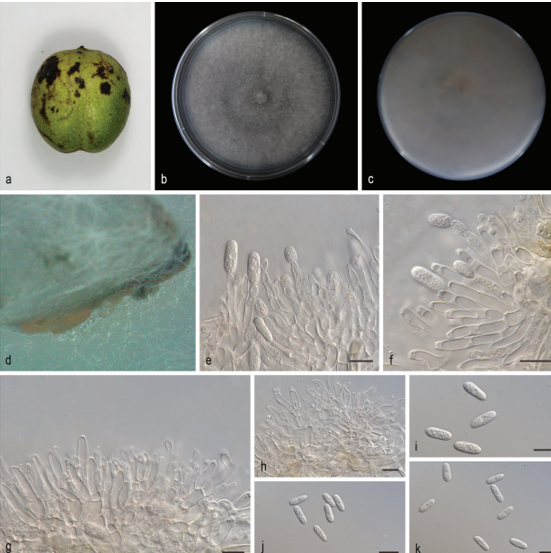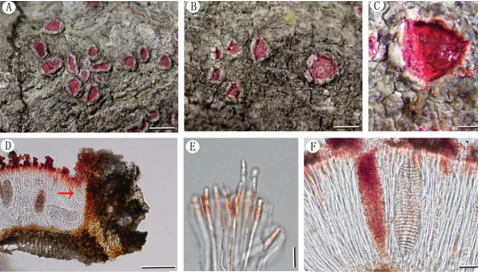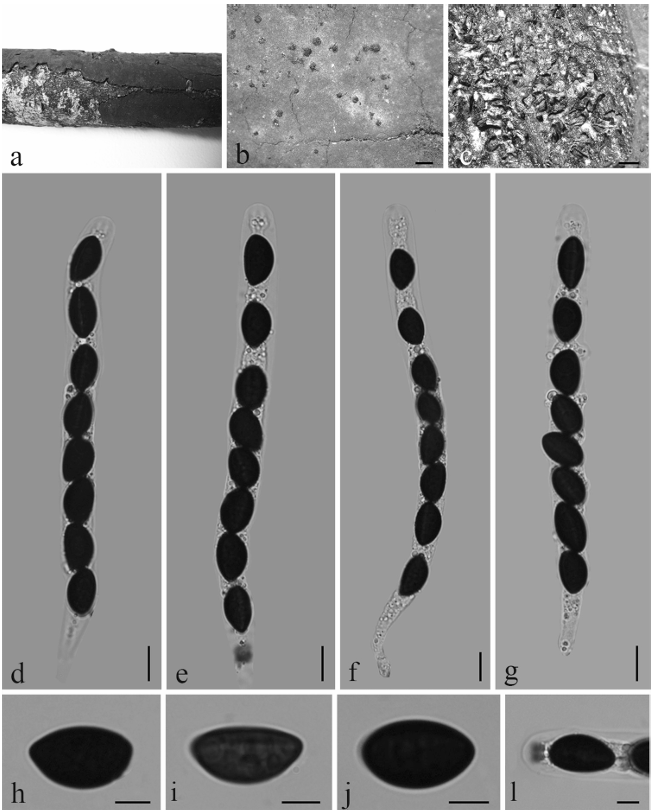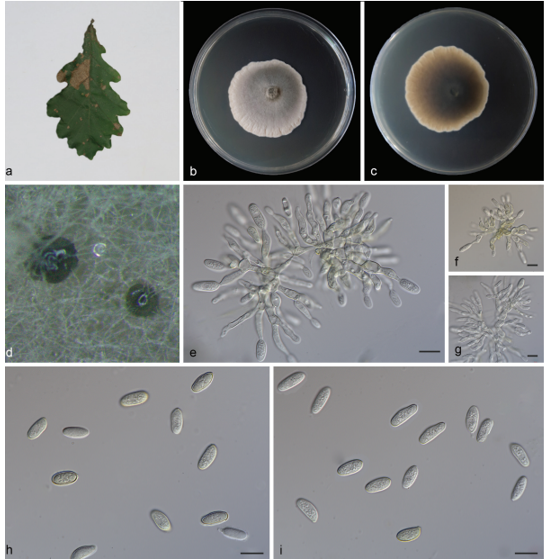Nigrospora magnolia N.I. de Silva & Lumyong, sp. nov. 2021
MycoBank Index Fungorum number: IF556382; Facesoffungi number: FoF09497
Holotype: MFLU 20–0597
Morphological description
Sexual morph:
Asexual morphs: : hyphomycetous, conidial masses with mycelia in culture on PDA. Conidiophores 2–4 µm diam., hyaline, micronematous or semi-macronematous, flexuous or straight, smooth. Conidiogenous cells 5–7× 5–6 µm (x= 6 × 5.4 µm), hyaline, monoblastic, discrete, solitary, determinate, doliiform to ampulliform. Conidia 10–14 × 10–13 µm (x= 12 × 11 µm), dark brown, solitary, globose or subglobose and smooth-walled.
Cultures: Colonies on PDA reaching 30 mm diameter after 7 days at 25°C, colonies circular, margin entire, flat, initially white and becoming dark brown, some white aerial mycelia, colony from above: brown; reverse: dark brown.
Habitat: healthy leaves of Magnolia candolli L. (Magnoliaceae).
Distribution: CHINA, Yunnan Province, Xishuangbanna.
GenBank Accession: (S22); ITS: MW285092, tub2: MW438334, (S5); ITS: MW699933, tub2: MW727265.
Notes: Phylogenetic results indicated that Nigrospora magnoliae (S22) clustered with other Nigrospora species and in particular, and formed a distinct clade sister to N. camelliae-sinensis, N. singularis and N. pyriformis with 61% ML, 50% MP and 0.75 BYPP support (Fig. 38). Nigrospora magnoliae has dark brown, globose or subglobose (10–14 × 10–13 µm) conidia that are slightly smaller than N. camelliae-sinensis (13–18 μm diam. spherical and 12–18 × 9–14.5 μm ellipsoidalconidia) N. pyriformis (12.5–16.5 µm globose to subglobose and 17.5–27.5 × 10–18.5 μm pyriform conidia) (Wang et al. 2017b) and N. singularis (9.5–13 × 11–15 µm ellipsoid to subglobose conidia) (Raza et al. 2019). Nigrospora sp. 2 (LC6702) clustered with N. magnoliae in our combined multi-gene phylogenetic analysis. Wang et al. (2017b) recorded Nigrospora sp. 2 (LC6702) in their phylogenetic analyses without morphological description, which was isolated from Camellia sinensis in China. Therefore, based on phylogenetic analyses and morphology, N. magnoliae identified as a novel endophytic species in this study.
Reference: de Silva NI, Maharachchikumbura SSN, Thambugala KM, Bhat DJ, Karunarathna SC, Tennakoon DS, Phookamsak R, Jayawardena RS, Lumyong S, Hyde KD 2021 – Morphomolecular taxonomic studies reveal a high number of endophytic fungi from Magnolia candolli and M. garrettii in China and Thailand. Mycosphere 11(1), 163–237, Doi 10.5943/mycosphere/12/1/3
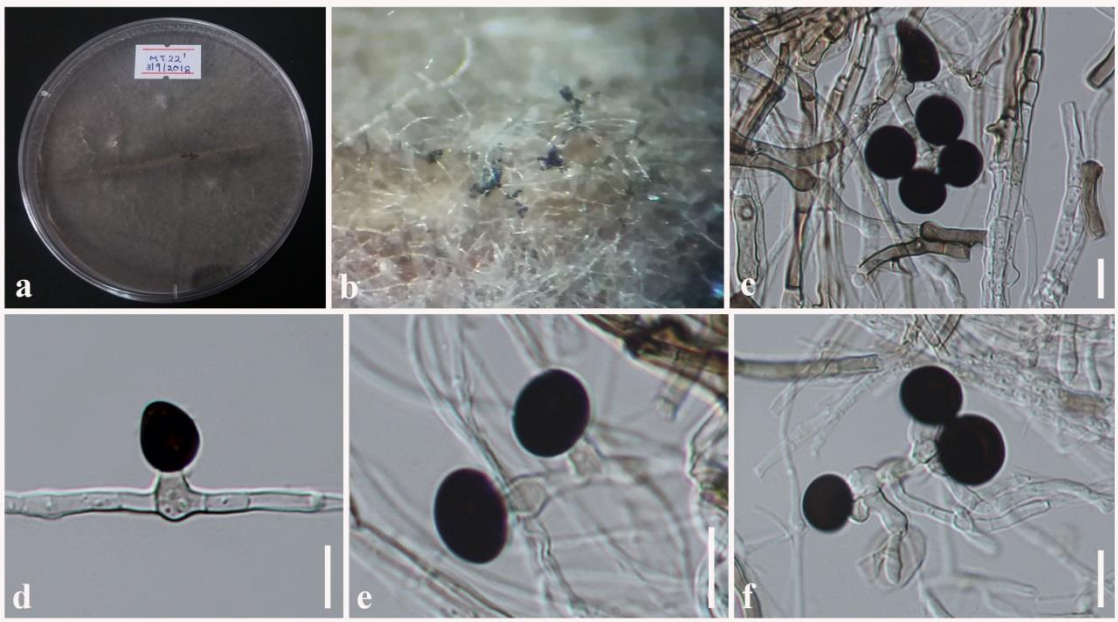
Nigrospora magnoliae (MFLU 20–0597, holotype). a Colonies on PDA. b Colony on PDA producing conidia masses. c Mycelia and conidia d, e Conidiogenus cells with conidia.f Mycelia and conidia. Scale bars: c–f = 10 μm.


